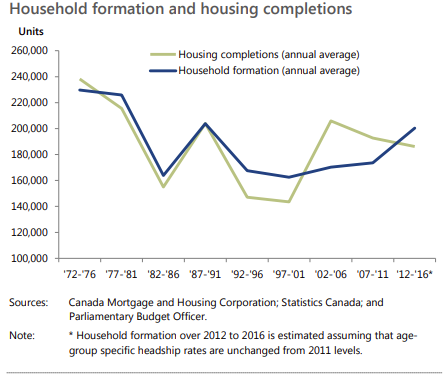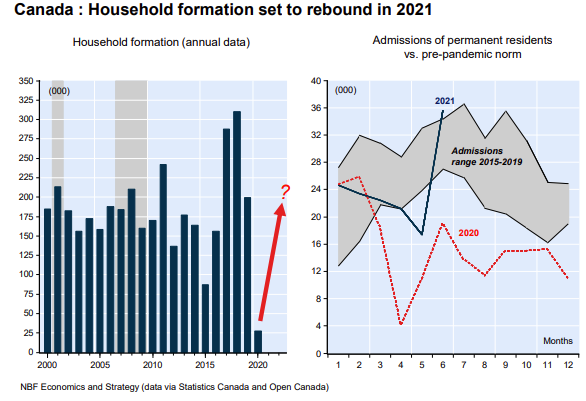The Pandemic Sharply Reduced Canadian Household Formation
Over the next two decades, government projections suggest that the number of Canadian households will continue to grow, though the annual peak in household formation will likely happen this year because of the pandemic-related spike in international migration.
Roughly from here on in, the annual pace of household formation is projected to decline due to the aging population of Canada’s population and lower fertility rates.
As the first chart below illustrates, real estate developments in Canada are very closely correlated with the growth of new households. In other words, household formation is the underlying driver of the long-term demand for new housing and thus new home construction.
The second chart illustrates that household formation fell dramatically in 2020 because of the pandemic and its initial heavy curb on immigration into Canada. The same chart also suggests that as pandemic impact ebbs, the immigration intake into Canada rebounded sharply in 2021.
It is interesting to contemplate that even as housing prices in Canada escalated sharply last year at the same time immigration into Canada dropped off sharply due to pandemic restrictions.
With the expected return to higher net immigration this year and next, we can expect no ultimate relief from this direction to higher housing prices. That is, a return to higher immigration into Canada should exacerbate the housing shortages in the large cities.





